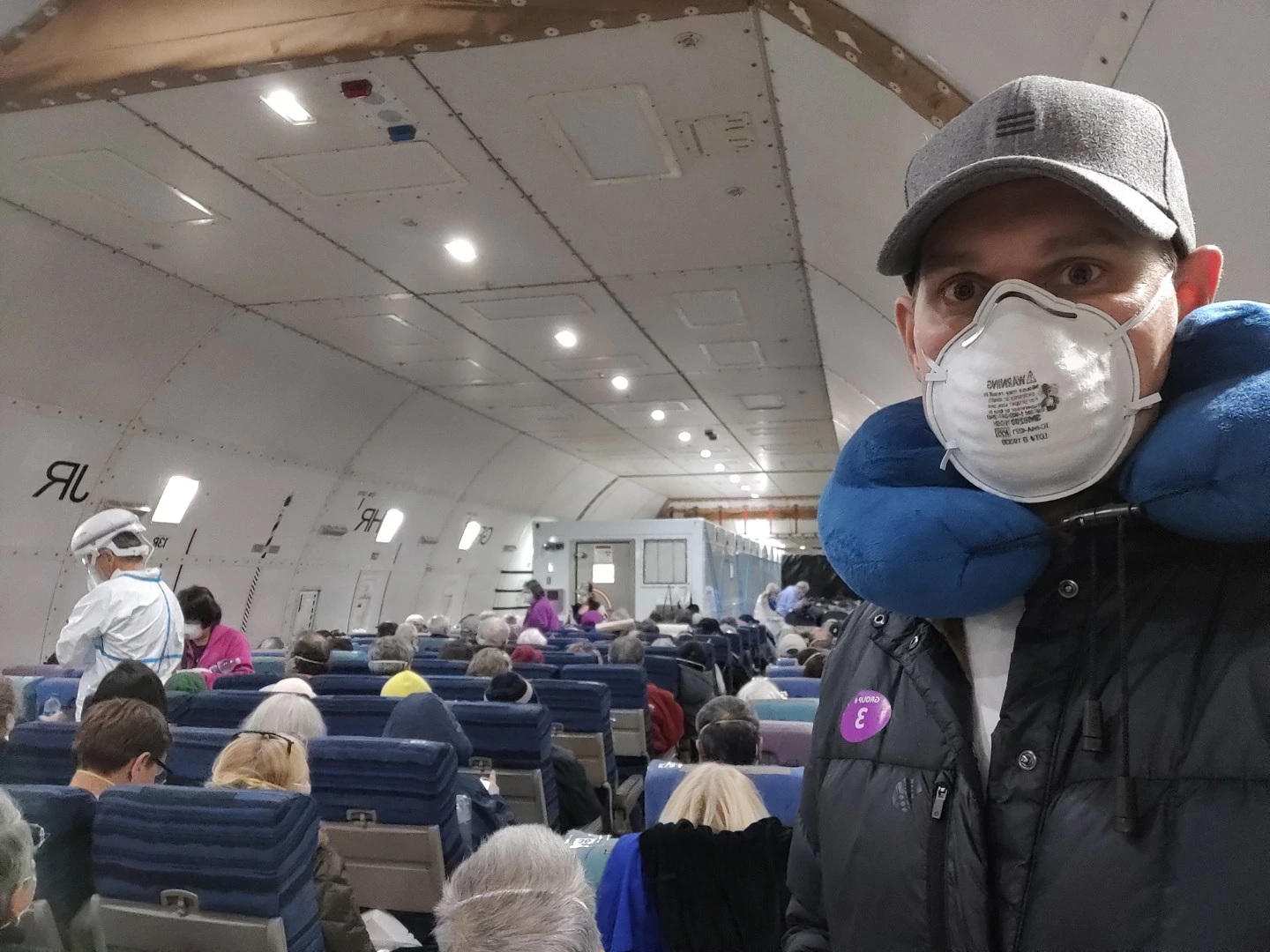Coronavirus-infected Americans flown home against CDC’s advice

In the wee hours of a rainy Monday, more than a dozen buses sat on the tarmac at Tokyo’s Haneda Airport. Inside, 328 weary Americans wearing surgical masks and gloves waited anxiously to fly home after weeks in quarantine aboard the Diamond Princess, the luxury liner where the novel coronavirus had exploded into a shipwide epidemic.
But as the buses idled, U.S. officials wrestled with troubling news. New test results showed that 14 passengers were infected with the virus. The U.S. State Department had promised that no one with the infection would be allowed to board the planes.
A decision had to be made. Let them all fly? Or leave them behind in Japanese hospitals?
In Washington, where it was still Sunday afternoon, a fierce debate broke out: The State Department and a top Trump administration health official wanted to forge ahead. The infected passengers had no symptoms and could be segregated on the plane in a plastic-lined enclosure. But officials at the Centers for Disease Control and Prevention disagreed, contending they could still spread the virus. The CDC believed the 14 should not be flown back with uninfected passengers.
“It was like the worst nightmare,” said a senior U.S. official involved in the decision, speaking on the condition of anonymity to describe private conversations. “Quite frankly, the alternative could have been pulling grandma out in the pouring rain, and that would have been bad, too.”
The State Department won the argument. But unhappy CDC officials demanded to be left out of the news release that explained that infected people were being flown back to the United States — a move that would nearly double the number of known coronavirus cases in this country.
The tarmac decision was a pivotal moment for U.S. officials improvising their response to a crisis with few precedents and extraordinarily high stakes. Efforts to prevent the new pathogen from spreading have revealed the limits of the world’s readiness for an unprecedented public health emergency. In the worst-case scenario, covid-19, a flulike respiratory infection, could become a full-blown global pandemic.
Navigating the crisis has required delicate medical and political judgments. The decision to evacuate the Americans from the Diamond Princess came only after infections on the cruise ship spiked and passengers revealed their grim living conditions.
One lesson from that debacle is that cruise ships are like petri dishes.Thousands live in close quarters on a vessel never designed for quarantines. The crew continued to deliver food, and health workers moved throughout the ship. More than 600 of the 3,700 passengers and crew members have now tested positive for the virus and two older Japanese passengers have died.
With Japanese authorities isolating the passengers for weeks off the coast, the ship, operated by Princess Cruises, quickly developed the second-largest number of coronavirus cases on the planet outside of China — more than in Japan, Singapore, Thailand, the United States or all of Europe. Avoiding “another China” has been the goal of the World Health Organization for weeks, and then it happened anyway, in Yokohama harbor.
The treatment of the Diamond Princess passengers stands in stark contrast to what happened to those on another cruise ship, the Westerdam, who were greeted by the Cambodian prime minister with handshakes and flowers, and who later traveled widely. Only later did news come that one of the Westerdam passengers had tested positive for the virus.
That situation spurred fears that Westerdam passengers would spread the virus around the world. But no additional passengers have tested positive, and so far, no evidence has emerged they have widely seeded the virus.
The coronavirus (officially, SARS-CoV-2) is extremely contagious. Experts estimate that without protective measures, every infected person will spread it to an average of slightly more than two additional people. The disease has been fatal in roughly two out of 100 confirmed cases.
Travelers have already spread it to more than two dozen countries, where it has infected more than 75,000 people and killed more than 2,000.